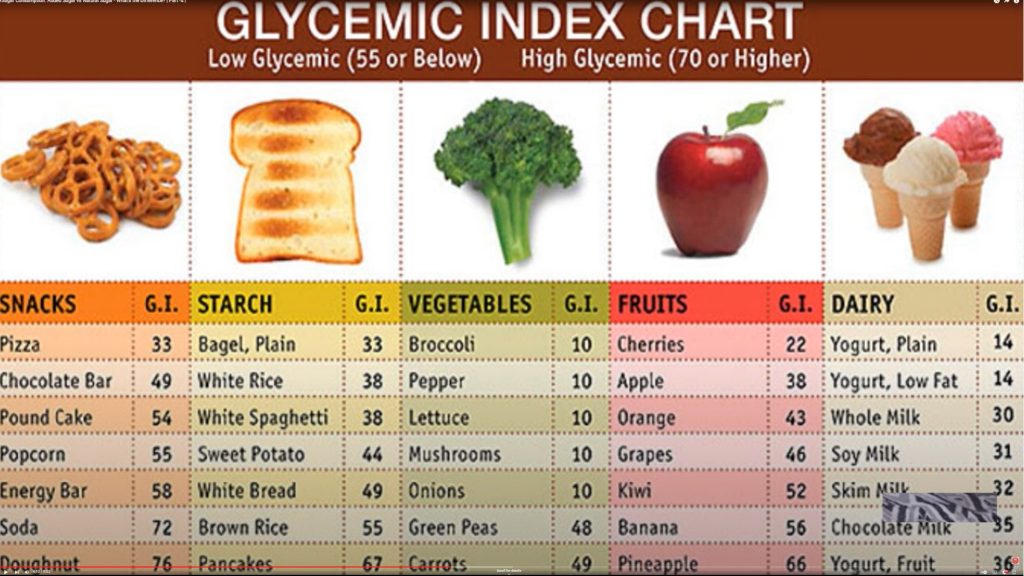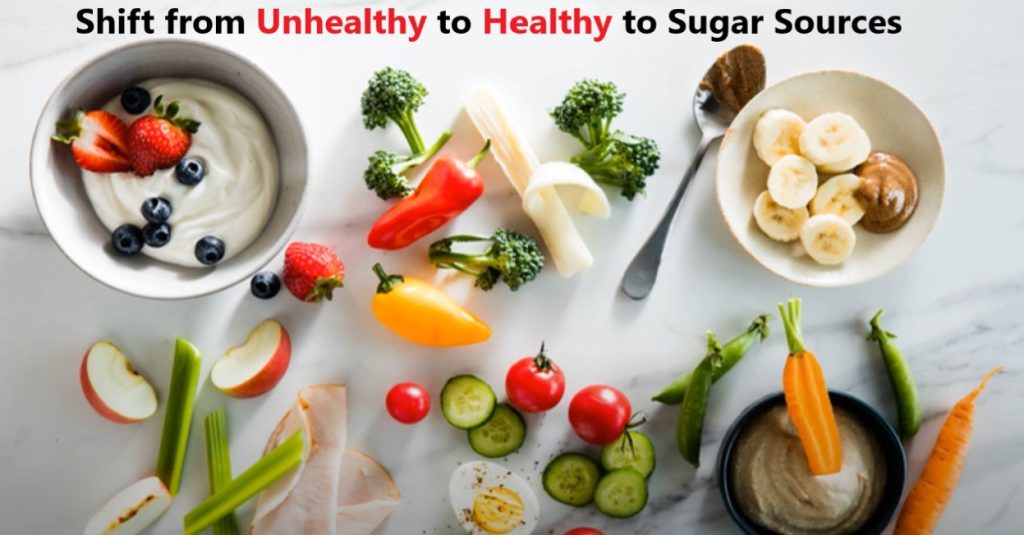Blood sugar utilization
Blood sugar utilization is the key in humans. The most commonly available sugar moiety are glucose, fructose, sucrose, and lactose. Glucose, fructose, sucrose, and lactose have divergent routes of assimilation and metabolism in the body. Disaccharides have two molecules consisting of a combination of monosaccharides. For example, Sucrose is made of a molecule each of glucose and fructose, lactose is made of one molecule of glucose and another of galactose, and Maltose is made of two glucose molecules. These common types of sugar are sourced in varying ratio in natural sources and added forms.
Their utilization via insulin and liver glycogen pathways is unique. We need to know the final impact of these sugar moieties on our body.
Sugar types: Differential effect of sugar on our body
The third video in the series imparts information about the differential effect of sugar gained from different sources.

Sugar gets a terrible reputation where health is concerned, we consume sugar directly as added or table sugar as well as indirect or hidden form by consumption through beverages, junk food, processed foods, sweets and desserts. Excessive consumption of sugar is associated with a number of chronic diseases.
Diabetes, obesity, heart disease, metabolic diseases and even some cancers are linked to excessive sugar consumption. Yet, it’s very important to remember that not all sugars are the same. Most fruits and some vegetables naturally consist of glucose and fructose and so does honey and the commonly used table sugar. Lactose is found in dairy products and maltose is found in germinating grains.
The sugar or chini we usually use is called added sugar or table sugar. What are the natural sources of sugar? Is there any difference between these two? Between added and natural sugar which is batter for our health. How to choose beneficial sources of natural sugar in our daily life. Fourth video in the series answers these questions.
Consumption: Added sugar vs natural Sugar – What’s the difference?
According to AHA guidelines, most men should consume no more than 150 discretionary calories of sugar per day. This is equivalent to 38 gm or 9 teaspoons (tsp) of sugar. Women should use no more than 100 discretionary calories on sugar per day. This is around 25 gm or 6 tsp of sugar.
We all like to have sweet food but sometimes sugar becomes an addiction which is commonly called sugar craving. Excessive sugar consumption is associated with dangerous effects, like weight gain, metabolic dysfunction, type 2 diabetes, high blood pressure, and heart disease. Various other and complications are associated with chronic consumption of excessive sugar.

Sugar craving: How to control naturally?
It’s very difficult to control sugar addiction and sugar craving. In the fifth video few very useful tips for controlling sugar craving is being shared. Although it is very difficult to control sugar craving, this video will help to understand simple ways of controlling sugar addiction.

Stress loves Sugar? Is sugar like addictive drug?
Sometimes we are unable to identify the cause of sudden high sugar level, body weight gain, and sugar imbalance. The silent and hidden cause of sugar craving and hyperglycemia can be stress. Stress can directly cause body weight gain and high sugar by causing an imbalance in leptin and cortisol hormone level. The 6th video of the series explains interrelationship between physiological and mental stress with sugar craving.

When we consume carbohydrate containing food, blood glucose concentration increases, and stimulates insulin release. In a healthy person, insulin then starts working, and the blood sugar level returns to the pre-meal level 2 hours after eating. Insulin is released from the pancreas in a biphasic manner in response to a square-wave increase in arterial glucose concentration.
The first phase consists of a brief spike lasting approximately 10 min followed by the second phase, which reaches a plateau at 2-3 hrs. When the early-stage insulin secretion is diminished, blood glucose levels tend to rise significantly right after meals. The pancreas compensates for this rise by increasing the second-phase insulin secretion, which eventually brings blood glucose levels back to normal.
When high GI foods (fried potatoes, bakery items, cold drinks, bread) cause a sudden spike in the blood sugar level, large amounts of insulin are secreted in order to process the sugar in the blood, causing a spike in insulin secretion to handle the sugar.
But when low GI foods (Fruits, vegetables, beans, nuts) are eaten, the sugar is gradually absorbed into the body so the blood sugar level rises gradually. Thus, an appropriate amount of insulin is secreted and sugar is promptly taken up by the tissues. High GI foods cause a sudden spike in the blood sugar level, large amounts of insulin are secreted in order to process the sugar in the blood, causing a spike in insulin secretion to handle the sugar.
The chronically increased insulin demand may eventually lead to the destruction of pancreatic β cells, and consequently resulting in impaired glucose tolerance. The 7th and last video of the series explains about release behaviour of insulin in response of high GI and low GI foods.
Blood sugar imbalance: How dangerous it can be?
Thus, knowing which foods are having low GI causing moderate amounts of sugar to be absorbed is very important to living a healthy life. We all like to have sweet food but on the other hand, are being concerned about the bad effects of Sugar consumption. Comprehensive understanding of the effect of sugar on our body and how to intelligently control sugar intake and decide about the food we commonly consume is must to have a healthy life.
https://www.youtube.com/watch?v=PEYNFPDOibQ&t=32s– Part 3
https://www.youtube.com/watch?v=pwc_T2V2RIE&t=101s– Part 4
https://www.youtube.com/watch?v=Eh2uieY4ziw&t=72s– Part 5
https://www.youtube.com/watch?v=N3Ht0thdoDg&t=7s– Part 6
https://www.youtube.com/watch?v=iWddYNX2ypM&t=35s– Part 7
For the Part 1 see Bad blood sugar in human body?
Disclaimer: This post is for informational and educational purposes.

